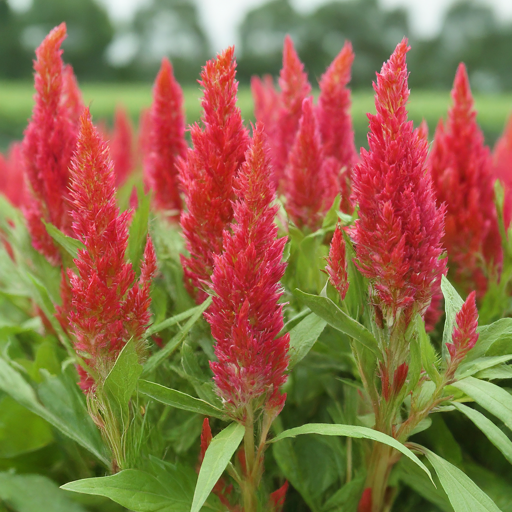
Celosia, with its textured blooms in fiery reds, oranges, and yellows, is a true garden warrior. But even the most valiant fighter needs backup. So, how do you choose companions that enhance the celosia’s beauty, attract pollinators, and create a thriving ecosystem in your flowerbed? Don’t worry, fellow gardener, this guide will assemble your dream team of ten fantastic floral friends for celosia!
Unveiling Celosia’s Needs: Sun, Soil, and Support
Before diving into the world of companion plants, let’s understand celosia’s basic requirements. These sun-worshipping champions thrive in well-drained soil and require moderate watering. Taller varieties might need staking for support, especially when heavy with blooms. Keeping these needs in mind, we can select plants that complement celosia’s growth pattern and preferences.
Enlisting the Bold and the Beautiful: Flowering Companions
1. Marigold: The Defender
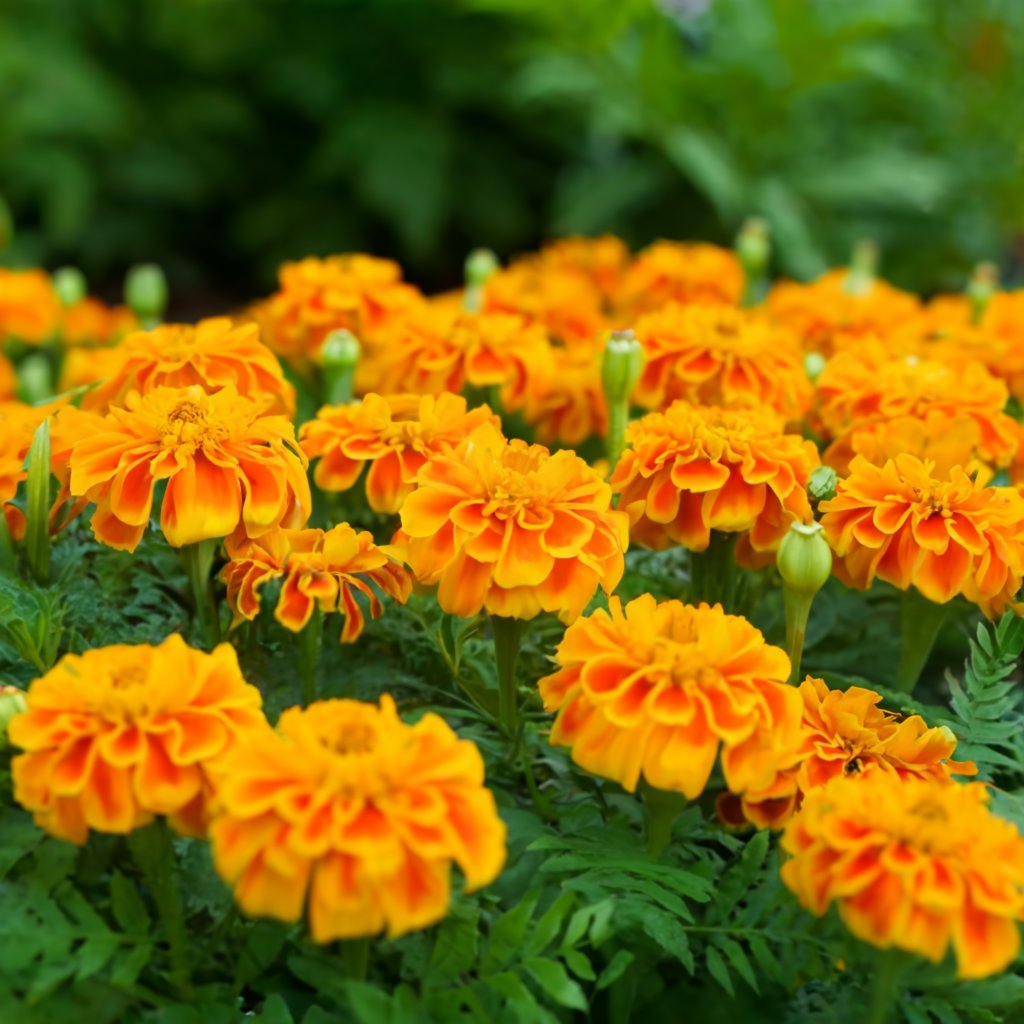
Marigolds, with their cheerful daisy-like blooms in gold and orange, are more than just pretty faces. They act as living shields, repelling harmful nematodes (microscopic worms) from attacking your celosia’s roots. Bonus points for their vibrant colors that create a stunning fiery display alongside celosia!
2. Zinnia: The Cheerful Comrade
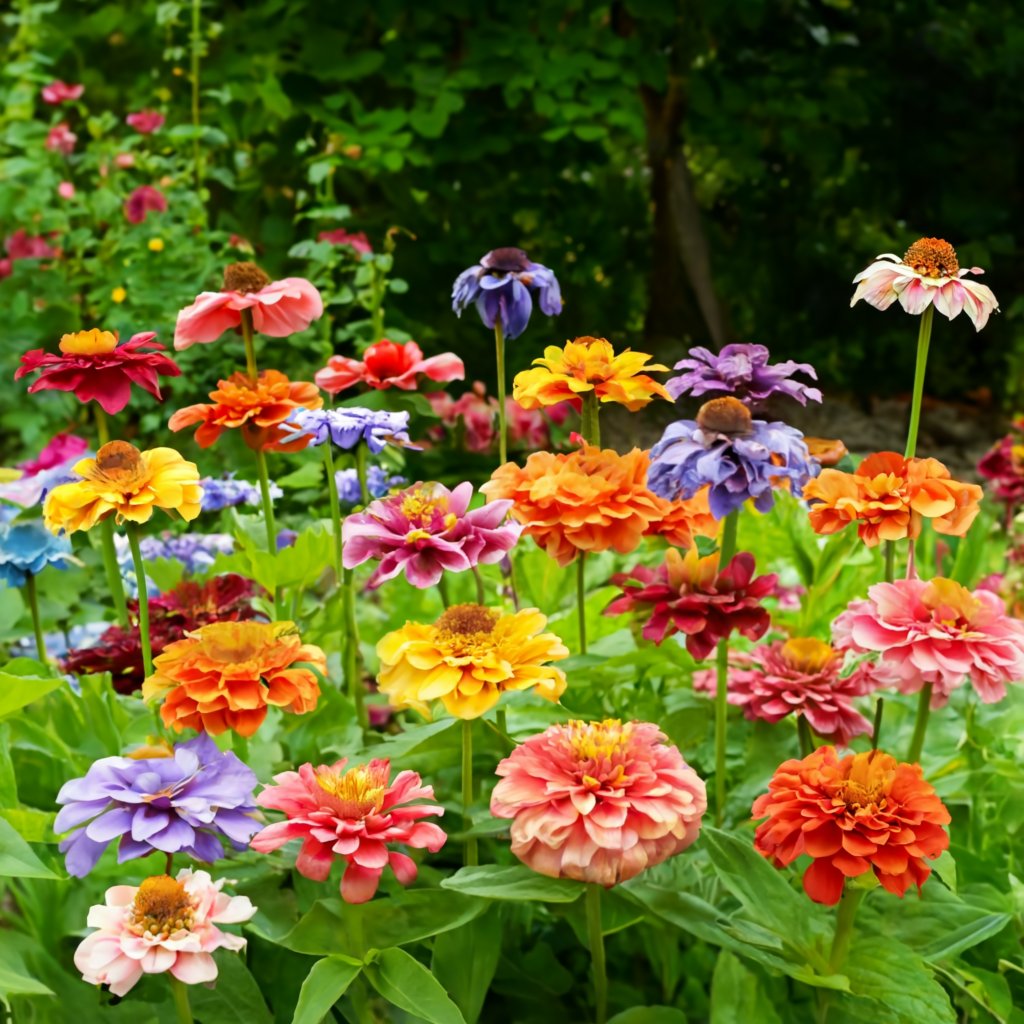
Zinnias are another sun-loving trooper, sporting a kaleidoscope of colors from fiery red to soft pink. Their long, sturdy stems complement the upright growth of celosia, while their large, daisy-like flowers create a sense of abundance in the garden. Both celosia and zinnia attract butterflies and other pollinators, ensuring a lively and buzzing ecosystem.
3. Cosmos: The Airy Ally
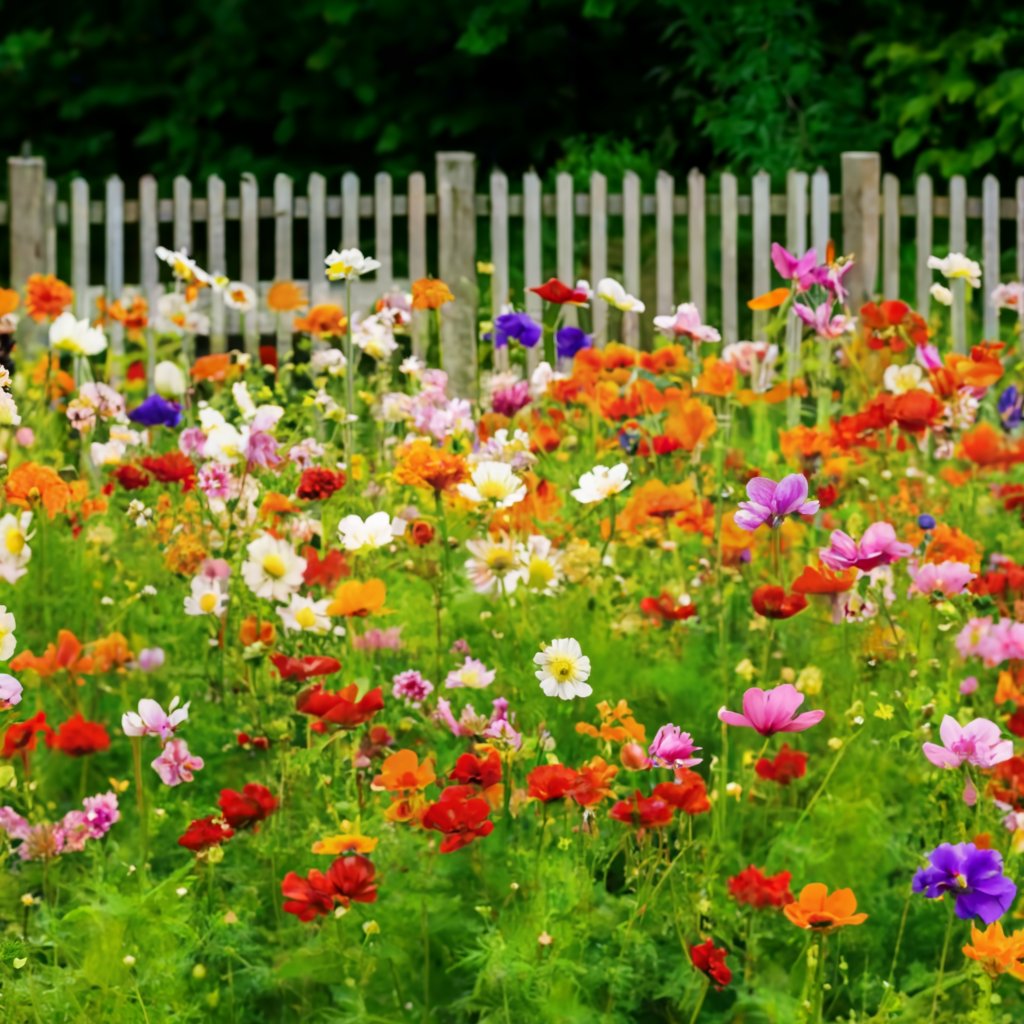
Cosmos, with its feathery foliage and delicate daisy-shaped flowers, adds a touch of airiness to the garden. These low-maintenance plants share celosia’s love for sunshine and well-drained soil. Taller cosmos varieties can provide a backdrop for celosia, while shorter ones create a delightful textural contrast.
4. Salvia: The Buzzing Buddy

Salvia, with its vibrant spikes of red, purple, or blue flowers, is a magnet for pollinators like bees and hummingbirds. Their tubular flowers offer a different visual interest compared to celosia’s feathery blooms, creating a dynamic composition. Plus, salvia thrives in similar conditions to celosia, making them easy-going garden companions.
Greener Pastures: Foliage Friends for Contrast
5. Dusty Miller: The Silvery Sentinel
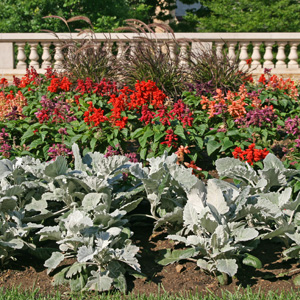
Dusty miller, with its fuzzy, silvery-white foliage, provides a stunning contrast to the bold colors of celosia. This low-growing plant acts as a living mulch, helping retain moisture in the soil and deterring weeds. Dusty miller thrives in hot weather, making it a perfect partner for celosia’s summer sizzle.
6. Ornamental Grass: The Waving Warrior
Ornamental grasses, with their graceful blades swaying in the breeze, add a touch of movement and texture to the garden. They come in various heights and colors, allowing you to create a dynamic backdrop for your celosia. Opt for blue fescue with its steel-blue foliage or hameln pennisetum with its burgundy plumes to create a captivating contrast.
7. Coleus: The Kaleidoscopic King
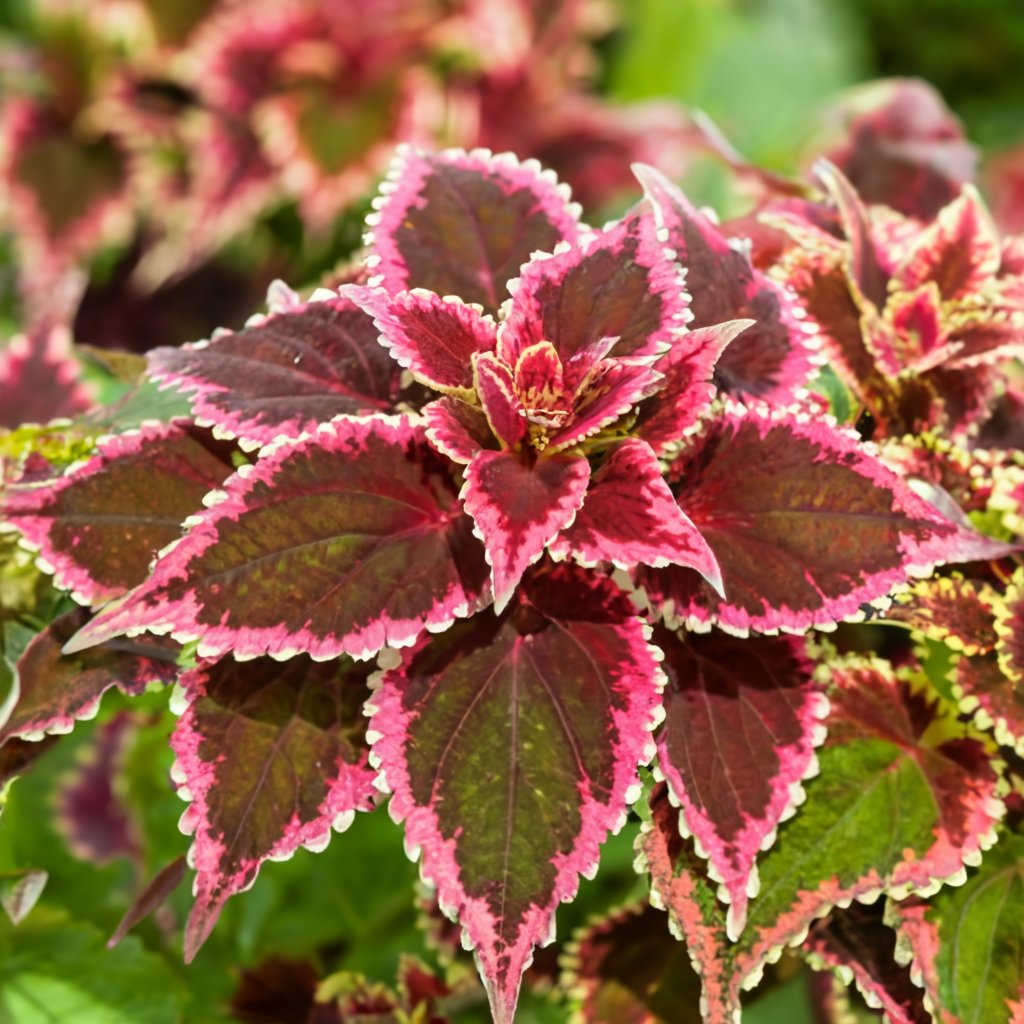
Coleus, with its vibrantly colored and patterned foliage, adds a touch of whimsy to the garden. While not flowering, their stunning leaves come in a kaleidoscope of colors, from deep burgundy to lime green. They prefer moist soil, so plant them strategically near the edge of the bed where they can receive more water without affecting the celosia’s drainage needs.
The Hidden Heroes: Beneficial Plants for a Thriving Ecosystem
8. Basil: The Fragrant Fighter
Basil, with its aromatic leaves used in culinary delights, does double duty in the garden. Its strong scent helps deter some pests that might target your celosia. Plus, its vibrant green foliage adds a pop of color and complements the fiery hues of celosia beautifully. Just remember to harvest basil leaves regularly to encourage bushier growth.
9. Nasturtium: The Climbing Comrade
Nasturtiums, with their cheerful trumpet-shaped flowers and edible leaves, are another multi-talented addition to the garden. These fast-growing climbers can be trained to twine around a support structure, creating a vertical element alongside your upright celosia. Nasturtiums also deter aphids, making them valuable protectors for your flowering companions.
10. Alyssum: The Fragrant Friend
Alyssum, a low-growing plant with a delightful honey-like scent, is a pollinator magnet. Its tiny white flowers create a soft, airy carpet at the base of your celosia, adding a touch of elegance and attracting beneficial insects. Plus, alyssum thrives in poor soil conditions, making it a great choice for filling in gaps between your celosia plants.
Strategizing for Success: Planting and Maintaining Your Victory Garden
Now that you’ve assembled your dream team, it’s time to plant! Remember, planning is key to creating a thriving and aesthetically pleasing garden. Here are some tips for success:
- Know your sunlight: Celosia needs full sun, so group your plants accordingly. Taller companions like cosmos can provide shade for shorter flowering plants.
- Staggering heights: Create visual interest by planting taller companions like cosmos or ornamental grasses in the background, followed by mid-height plants like zinnias or salvia, and finishing with lower-growing options like alyssum or coleus at the front of the bed.
- Mind the spacing: Refer to the recommended spacing requirements for each plant on seed packets or plant labels. Proper spacing ensures optimal air circulation and prevents overcrowding that can lead to disease.
- Water wisely: While celosia enjoys well-drained soil, it also needs regular watering, especially during hot and dry periods. Water deeply at the base of the plant, avoiding overhead watering that can promote fungal diseases.
- Mulch matters: Apply a layer of organic mulch around your plants to retain moisture, suppress weeds, and regulate soil temperature.
Victory Blooms: Enjoying the Rewards of Your Labor
With careful planning and planting, your celosia and its companions will thrive, creating a vibrant and visually stunning display throughout the summer. Deadheading spent flowers on both celosia and your companion plants will encourage continuous blooming. Additionally, removing any diseased or pest-ridden leaves promptly will help maintain overall plant health.
